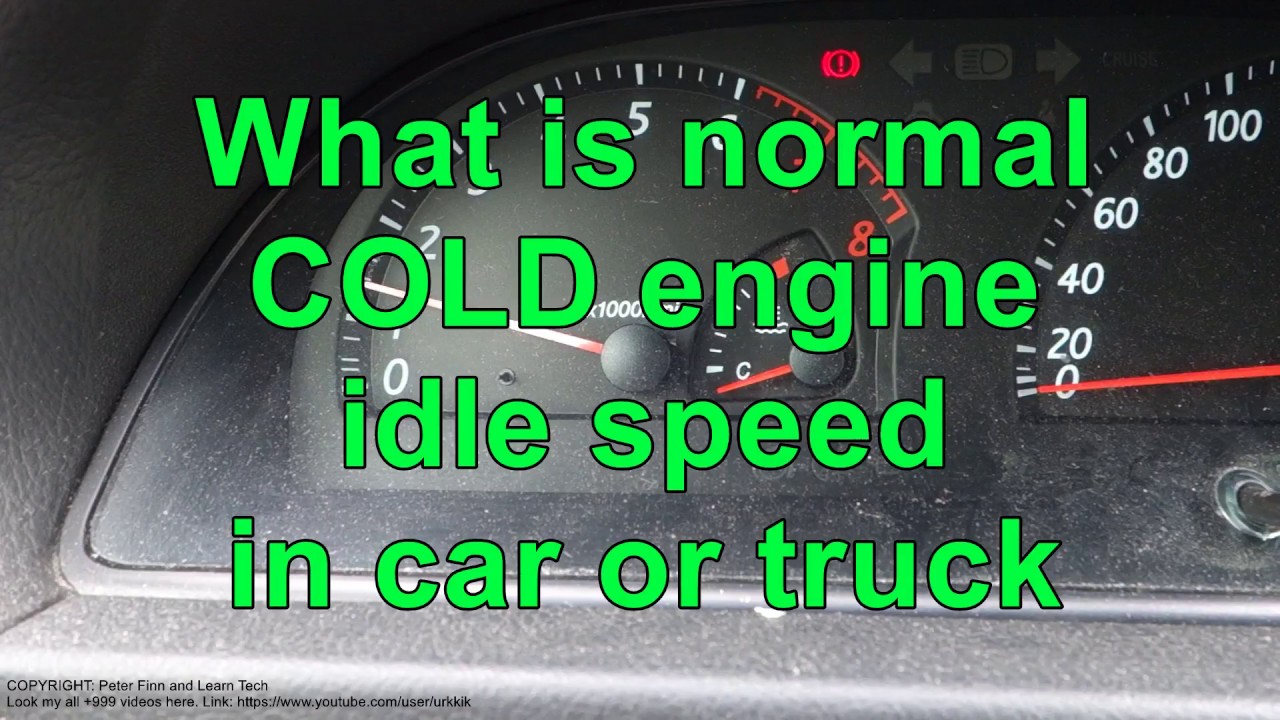Your truck should ideally idle around 600-800 RPM. Maintaining an appropriate idle RPM is crucial for proper engine function and fuel efficiency.
Furthermore, it helps reduce wear and tear on engine components and ensures a smooth and consistent engine operation. If your truck is idling at a higher or lower RPM than recommended, it may indicate an underlying issue that needs to be addressed by a professional mechanic.
Properly maintaining and adjusting the idle RPM of your truck is essential for its overall performance and longevity.

Credit: www.oreillyauto.com
The Importance Of Proper Truck Idle Rpm
Proper truck idle RPM is essential for optimal engine performance and longevity. When the idle RPM is set too low or too high, it can lead to various problems.
One problem that can arise from incorrect idle RPM is decreased fuel efficiency. When the RPM is too high, the engine consumes more fuel than necessary. Conversely, if the RPM is set too low, the engine may struggle to maintain a steady idle and may require additional fuel to compensate.
Another issue that can arise is engine damage. An excessively high or low idle RPM can put excessive strain on engine components, leading to premature wear and potential damage.
To ensure proper engine performance, it is important to consult your truck’s manual or a professional for the recommended idle RPM. This will help maintain fuel efficiency, prolong engine life, and prevent unnecessary repairs.
Factors To Consider For Determining Idle Rpm
Determining the idle RPM for your truck involves considering various factors such as engine type, age, and manufacturer specifications. It is crucial to ensure that the idle RPM is set at the appropriate level to optimize engine performance, fuel efficiency, and prevent issues like engine stalling or rough idling.
| Factors to Consider for Determining Idle RPM | |
| Understanding the engine specifications and manufacturer recommendations | The ideal idle RPM for a truck depends on various factors. One crucial consideration is understanding the engine specifications and following the manufacturer’s recommendations. Different manufacturers may have specific idle RPM guidelines for their trucks based on engine design and components. |
| The impact of vehicle type, weight, and load on idle RPM requirements | The type of truck, its weight, and the load it carries also affect the ideal idle RPM. Larger trucks with heavier loads may require higher idle RPMs to ensure a smooth and stable operation. Lighter trucks may have lower idle RPM requirements. |
| Environmental factors and their influence on idle RPM settings | Environmental conditions can impact idle RPM settings. Extreme weather conditions such as high temperatures or high altitudes may require adjustments to the idle RPM to compensate for these factors. Similarly, trucks operating in colder climates may need a higher idle RPM to prevent stalling and maintain engine performance. |
Optimal Idle Rpm Range For Different Truck Types
When it comes to light-duty trucks, finding the ideal idle RPM is crucial for both efficiency and engine life. A good RPM for idle can result in better fuel economy and reduced wear on engine components. It is recommended to keep the idle RPM between XX and XX for light-duty trucks to ensure optimal performance.
For heavy-duty trucks, the ideal idle RPM range may vary depending on the specific requirements for heavy loads and long hauls. It is important to strike a balance between fuel efficiency and the need for sufficient power. Consult the manufacturer’s guidelines or refer to your truck’s manual to determine the recommended idle RPM range for heavy-duty trucks.
Off-road trucks face unique challenges and considerations due to the rough terrain they encounter. The ideal idle RPM for off-road trucks should ensure engine stability and prevent stalling. It is advisable to keep the idle RPM slightly higher than the idle RPM of regular trucks, as this can help provide better traction and maneuverability in off-road conditions.
Maintaining Proper Idle Rpm: Tips And Techniques
|
When it comes to maintaining proper idle RPM for your truck, regular engine maintenance and tune-ups are key. By keeping your engine in good condition, you can ensure that it idles at the right RPM. Diagnostic tools and techniques can also help you monitor your truck’s idle RPM and detect any issues. These tools can provide valuable information about your engine’s performance and help you identify and address any problems that may be causing high or low idle RPM. If you’re experiencing issues with your truck’s idle RPM, adjusting the idle RPM settings can often help. However, it’s important to troubleshoot common problems that may be causing the issue before making any adjustments. Overall, maintaining proper idle RPM for your truck is essential for its overall performance and longevity. Regular maintenance, diagnostic tools, and troubleshooting techniques can all help ensure that your truck idles at the correct RPM. |
Frequently Asked Questions On What Rpm Should My Truck Idle At
What Is The Best Rpm For Idle Speed?
The best RPM for idle speed varies depending on the make and model of the vehicle. It is recommended to consult the owner’s manual or contact a mechanic for the specific RPM range for your truck.
Is It Normal To Idle At 1500 Rpm?
It is not normal for a car to idle at 1500 RPM. This high idle speed can indicate issues with the engine or other components. It is recommended to have your vehicle inspected by a professional mechanic to address the problem.
What Is A Good Rpm For A Truck?
A good RPM for a truck at idle can vary depending on the make and model, but generally, it should be around 600 to 800 RPM. This ensures smooth operation and allows for proper functioning of the engine components.
What Rpm Is Too High For Idle?
A high RPM for idle is considered too high if it exceeds the normal range for your vehicle. Check your vehicle’s manual or consult a mechanic for the specific RPM guidelines. Excessive idling can be caused by various issues and should be addressed to prevent damage to your engine.
Conclusion
Determining the ideal RPM for your truck’s idle is crucial for its overall performance and efficiency. Whether you’re experiencing high idling levels or experiencing shaking while idling, it’s important to diagnose any issues and take necessary measures. While there are various opinions and recommendations, it’s best to consult your vehicle’s manual or an experienced mechanic to ensure you maintain the appropriate RPM for your truck’s idle.
Remember, a well-maintained idle RPM contributes to a smoother driving experience and better fuel economy.







